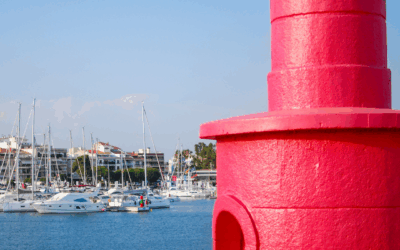After the quintessential winter celebration, Christmas, with its exquisite delicacies and typical sweets, and all the members of the family surrounding the table, comes Saint Stephen’s Day, also known as ‘Second Christmas’, a smaller celebration that takes place in many countries.
In Spain, for example, this tradition has taken root especially in Catalonia and the Balearic Islands, although it is also maintained in some villages of Valencia, Burgos and Navarre. In this publication, we explain the origin of this festivity and the customs involved, as well as some plans for you to enjoy this magnificent day in Barcelona and Costa Dorada.
We recommend you choose Shuttle2Sun‘s private transfer services, low-cost and sustainable, so you can get to your destination, from Barcelona airport, Barcelona port and Camp de Tarragona AVE train station.
Why is Saint Stephen’s Day celebrated?
First, we must know who Saint Stephen was and why this day has been chosen for his homage. The apostle Saint Stephen was a Greek-speaking Jew who converted to Christianity and ended up being the first Christian martyr to die for proclaiming his faith in Jesus Christ. He was stoned to death, accused by false Jewish witnesses of blasphemy against Moses and God. This event took place on a 26th of December, years after the birth of Jesus.
The origin of the celebration dates to Catalonia’s Carolingian past. In the 9th century, Old Catalonia was part of the Empire founded by Charlemagne and depended on the bishopric of Narbonne, while the rest of Spain was dominated by the Goths and depended on the bishopric of Toledo.
In the case of the Carolingian Empire, the concept of family included a much larger group of people who, on important celebrations such as Christmas, were obliged to travel to the manor house to gather together. At that time, the journeys were long and tedious, due to the condition of the existing carriages, and it was therefore necessary to have a whole day after the festive day to return home. For this reason, the 26th of December was established as a non-working day.
This date has been maintained over time until the present day, which is celebrated every 26th of December, with customs that have been incorporated over the years.

St. Stephen’s Day traditions
Today, on St. Stephen’s Day, families gather to continue celebrating Christmas. Some of the traditions and customs that revolve around this date are, for example, eating cannelloni, which are usually made with the leftovers from Christmas Eve and Christmas Day meals.
This typical dish was imported to Catalonia by Italian chefs in the 19th century, and from that time onwards it was introduced into the menu of Saint Stephen’s Day, although only in bourgeois and wealthy families. It was not until the beginning of the 20th century that this dish became popular and spread to all Catalan homes. In the past, before the arrival of cannelloni, households used to eat “arròs de miques”, a dish made with rice, which included the leftovers from the Christmas Day roast.
On the other hand, “neules“, a typical St. Stephen’s Day sweet in the shape of a wafer, is usually eaten with dessert, such as crème brûlée, although it can also be eaten on its own.
Remember that Shuttle2Sun offers its private transfer services, so you can get to Barcelona and Costa Dorada, from Barcelona airport, Barcelona port and Camp de Tarragona AVE train station.

In which other countries is this date celebrated?
Saint Stephen’s Day is not only celebrated in Catalonia and the Balearic Islands, but also in other European countries that had Carolingian influences during the Middle Ages, especially in Central Europe and Scandinavia. Some of the countries where this tradition is still alive are Italy, Germany, Czech Republic, Austria, Switzerland, Greece, Hungary, Poland, United Kingdom, as well as Lithuania, Bulgaria and Denmark, among others.
Some customs that are worth mentioning are the following: in the Czech Republic, children sing carols house to house to receive Christmas presents; in Ireland, they celebrate Wren Day, where young people also go out, dressed in bright costumes and singing carols; and, in England, they celebrate Boxing Day, giving donations and gifts to the neediest families.
Ideas for enjoying Saint Stephen’s Day
On this special day, we suggest a series of plans for you to enjoy with your family and friends in the best possible way.
On the one hand, as it is customary in Catalonia to eat cannelloni on the 26th of December, we suggest you try this typical dish in the best restaurants in Barcelona, such as Ca l’Estevet, Teresa Carles, Petit Comitè, 7 Portes, Cal Boter and Can Culleretes, the oldest restaurant in Barcelona.
These are some of the establishments whose menus include cannelloni with different types of fillings, from meat and mushrooms to foie gras and truffle, and with the star ingredient that characterises this dish, béchamel sauce.
On the other hand, if you are in Barcelona and you are spending the day with children, you can visit L’Aquàrium, where you can learn about the animals found in Mediterranean and tropical seas. In total, the enclosure has more than 11,000 specimens of more than 450 different species.
Another option you can do on this festive day is to visit PortAventura World, located in the heart of Costa Dorada, between the towns of Salou and Vila-seca, which is decorated with Christmas motifs during this time of year. If you are travelling with your family, enjoy a special and magical day, with magnificent shows for all ages, such as the Magic Show and La Llegada de los emisarios reales, among others, as well as all the park’s attractions.
If you want to enjoy Saint Stephen’s Day in Catalonia, don’t hesitate to visit its star destinations. You have at your disposal the Shuttle2Sun private transfer services, low-cost and sustainable, from Barcelona airport, Barcelona port and Camp de Tarragona AVE train station.



